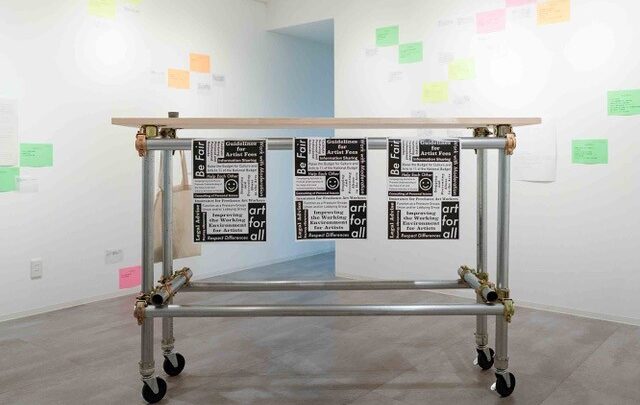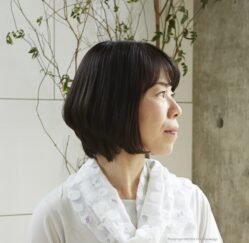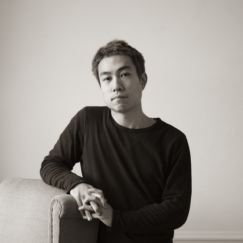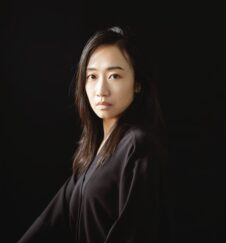
Photo: Toshihiro Kobayashi
WebinarThursday 24 February 2022
12:00pm – 1:30pm
Art x Ecology x Japan
This event will start at 12pm GMT
Organised by the Daiwa Anglo-Japanese Foundation
Fully bookedDuring crises such as economic depressions, wars, natural disasters and pandemics, societies tend to pull together to get through hard times. Adversity focuses minds and enables people to find new energy to tackle extraordinary situations. The COVID-19 pandemic has been another catalyst for paradigm shifts.
In Japan, art for all was initiated to broaden the understanding of diverse cultural and artistic activities and to discuss how contemporary art contributes to our society through enlightening and investigating, creating dialogue and supporting social reforms. This new organisation has been a much-needed presence as a network for artists to share their points of view, consult, or simply communicate their concerns to their professional peers. In other regions of the world these networks have existed for many years, or perhaps in some cases no such network has been needed to remind governments of the importance of artists.
This first talk, in a series of three, explored some case studies in Japan. Tomoko Wakabayashi gave an overview of Japan’s support for the arts and culture, its history, and the issues around it, and how it fared during the three “difficult periods” (recession, earthquake, COVID-19). She talked about her experiences with the contemporary art emergency grant programme launched during the pandemic by the Toshiaki Ogasawara Memorial Foundation in response to questionnaire results, and considered the overall ecosystem for art and culture in Japan. Dr Justin Jesty introduced some examples of how modern and avant-garde artists have organised support for their creative work and their social missions in the post-War period. He considered some of the enduring challenges artists have faced and suggested how the present moment may provide some opportunities to address them. Yoi Kawakubo and Towa Takaya then explained how art for all began, why it was needed, what its current activities are, and its plans for the future.
This talk series is hosted by Daiwa Anglo-Japanese Foundation in partnership with art for all, and organised by Yoi Kawakubo, Keiko Koshihara, Towa Takaya and Haruna Takeda.
A short summary of the event can be found via this link, located on the Foundation’s Facebook page, and a video can be watched here:
Related event
Covid-19 and the Artists’ Union: Is this a turning point in Japan?
About art for all
We at art for all are a network of art creators and others involved in this field who are working to improve the environment for the visual arts sector. The visual arts are creative activities that are vital to human beings. Both influencing and being influenced by other artistic fields including architecture, music, theatre, film, dance and literature, they have given rise to a variety of forms of expression.
Creative activities in the visual arts sector are supported by a wide range of people, from those creating works to those exhibiting and installing them, those distributing and selling them, those involved in education and local community activities, students studying visual arts, and the many people who enjoy these works. This multi-layered domain forms one part of the large ecosystem we call the arts.
At the same time, the visual arts field is supported by a large number of volunteers and small-scale workers on fixed-term contracts, including freelancers and part-timers, so its economic base is unstable. The visual arts sector’s human infrastructure is fragile, and many of those involved in the sector are in a weak position.
Recognising that this is the current situation, our desire is for all cultural and artistic work to be respected, and to bring increased vigour to the sector without damaging the arts sector ecosystem. To this end we engage in activities including raising public awareness of and researching problems affecting those involved in the visual arts sector, dialogue and support.
art for all is a platform consisting mainly of those involved in the visual arts sector, and we started our activities in response to the shutdown of cultural and artistic activities that occurred during the COVID crisis of 2020, with the aim of bringing increased vigour to the sector without damaging the arts sector ecosystem. In June we held a 2-day online conference with participation from a total of about 500 people involved in the visual arts sector, and this resulted in our appeal “Wide-ranging Emergency Help for Those Involved in the Visual Arts”, which was signed by 4,710 people and submitted to a number of government ministries and offices.
We engage in activities including organising webinars with invited experts, “practical courses for artists” offering opportunities to share knowledge, and art community activities, as well as disseminating the importance of art for society and other information.
About the contributors

Tomoko Wakabayashi
Tomoko Wakabayashi is a Project Coordinator and Specially Appointed Professor at Rikkyo University Graduate School of Social Design Studies.
From 1999-2013, in her role as Programmes Officer at the Association for Corporate Support of the Arts, she worked to promote cultural activities by corporations and to improve the environment for supporting the arts. During this period she designed and managed Net TAM, Toyota Art Management’s comprehensive information website. Since 2013 she has been freelance, working on activities including consulting, assistance, evaluation, writing, research, development of corporate sponsorship, local government cultural strategies and support for NPO managements. She has taught on post-graduate adult education programmes since 2016. Her research focuses on reimagining the roles of culture and art in the social design field.

Dr Justin Jesty
Justin Jesty is Associate Professor in the Department of Asian Languages and Literature at the University of Washington in Seattle. He researches the relationship between art and social movements in postwar Japan. He recently published the book Art and Engagement in Early Postwar Japan (Cornell University Press 2018), which was awarded the 2019 ASAP Book Prize by the Association for the Study of Arts of the Present. He is currently researching contemporary socially engaged art. In 2017 he edited a two-part special issue on the topic in FIELD: A Journal of Socially-Engaged Art Criticism. He has also published several articles on postwar social documentary. https://washington.academia.edu/JustinJesty

Yoi Kawakubo
Yoi Kawakubo is a Spanish-born Japanese artist based in London and Tokyo. He turned to artistic practice after receiving a degree in applied neuroscience and subsequently working as a financial trader for several years. He creates photographs, moving image and sound installations, often based on historical research and personal history, all intertwined with economic, social and philosophical reflections. He is currently engaged in an artist-led movement to set up a network in Japan that could act as a trade union, government pressure group and knowledge-sharing platform for art workers. His recent notable exhibitions include The Yokohama Triennale 2020 (Yokohama, Japan), Roppongi Crossing (Mori Art Museum, Tokyo, 2019), 21st DOMANI: The Art of Tomorrow (The National Art Center, Tokyo, 2019), Linguamania (The Ashmolean Museum, Oxford, 2017), The Vision of Contemporary Art 2015 (The Ueno Royal Museum of Art, Tokyo, 2015). He was a Fellow of the Overseas Study Programme for Artists, Agency for Cultural Affairs, Government of Japan in 2017 and the recipient of the POLA Art Foundation award for overseas research in 2016.

Towa Takaya
Having graduated from Goldsmiths, University of London in 2016, Takaya focusses on painting. Her works are characterised by fine, elegant strokes accompanied by colour palettes evoking a sense of intimacy. She explores themes revolving around notions of traversing space and time, and the phenomenon of existence. In recent years, Takaya has been experimenting with digital images projected through virtual reality simulations. She also organises exhibitions and other events with other artists at artist-run spaces and galleries to open up a dialogue about how artists work every day for the local community. In art for all, she is a personality on afa radio. Her radio programme aims for honest and casual conversations that share with listeners the personal and professional issues faced by people working in the art industry.